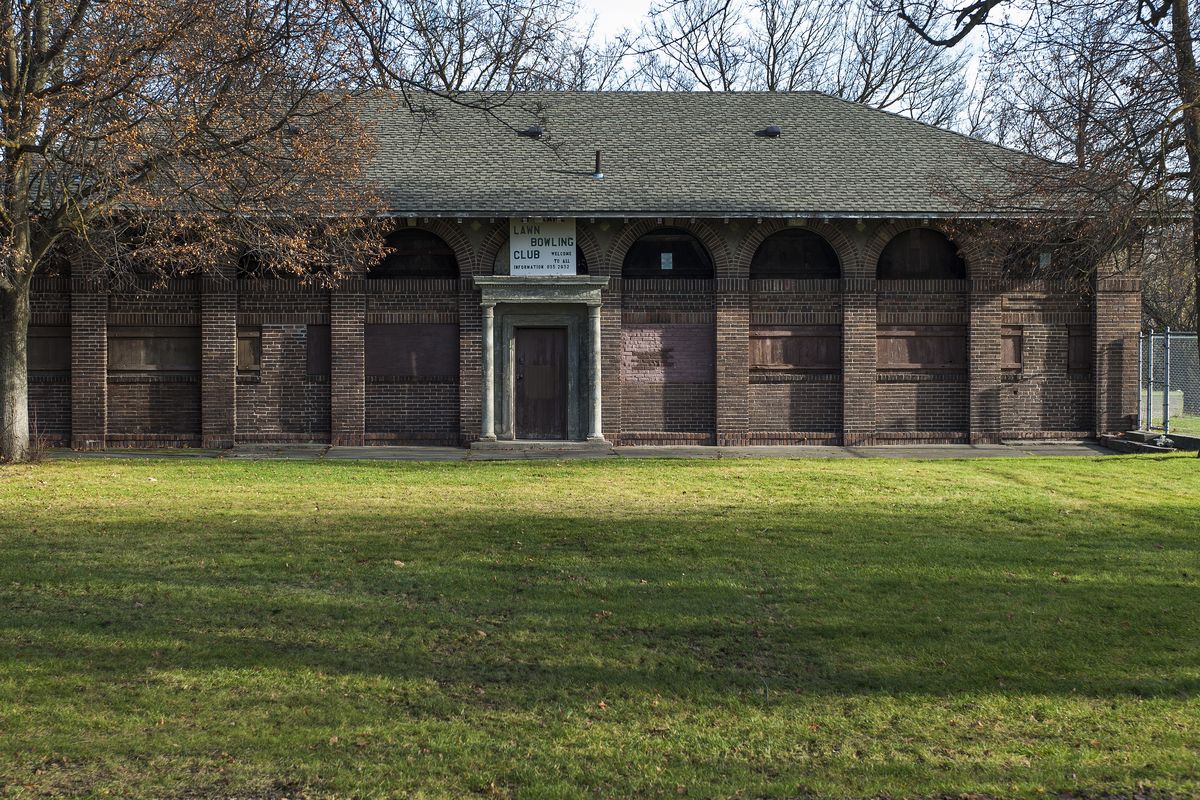Mission Park bathhouse sports Italian Renaissance features

It was once called “the star attraction of 1914,” but today Spokane’s first public bathhouse stands boarded up and primarily used for storage of Spokane Parks Department lawn mowers and other equipment.
The two-story Italian Renaissance-style structure was built in 1914 in what was then known as the Sinto Triangle Park, part of East Mission Park, on land bordered by East Mission Avenue, the Spokane River, the Northern Pacific rail tracks and the larger park to the west. It came about as part of the decision two years earlier by the Spokane Park Board, which proposed a park and playground for the working class area in the Logan-Gonzaga University neighborhood in northeast Spokane.
In 1913 prominent Spokane building contractor John Forrest sold 13 acres to the city for $11,500 for the project, and because of the shape of the property it became known as Sinto Triangle Park (it was located on a vacated section of Sinto Avenue), or just Sinto Park. It wasn’t until 1970 that the little park was listed as part of Mission Park in city directories.
Spokane master architect Harold C. Whitehouse, who was also responsible for the Gothic Revival style-inspired Episcopal Cathedral of St. John the Evangelist on Spokane’s South Hill, was hired to design the two-story, 74-by-35-foot rectangular bathhouse. It was constructed of brick masonry with red face bricks over red common bricks forming 14-inch walls that housed a bathhouse, swimming pool equipment, offices, lavatories and showers and private dressing rooms. Construction cost was just under $7,500. The Italian Renaissance style was not much seen in Spokane, and it featured a low-pitched hip roof, widely overhanging eaves, decorative eave brackets, arched windows and an accentuated center front entrance highlighted by classical columns and a classical pediment.
Two swimming pools were constructed outside the bathhouse, one for men and boys and one for women and girls. There was also a public wading pool for children built nearby. In addition, the park was developed with handball courts, pathways, playgrounds, trees and lawns. All the pools were removed in the early 1960s and the bathhouse was left intact. A new public bathhouse and outdoor pool (now called Witter pool) were constructed in 1960 just to the north.
Records show that the little park and its public plunges (as the pools were called) were so successful that they inspired construction of five additional city parks with outdoor pools and public bathhouses.
Today the 1914 bathhouse looks pretty much as it did when it was last used except for a few modifications, most notably the windows covered with boards to prevent vandalism, the round roof vents removed, the more ornate front door replaced with a simple wood door, and other preservation and safety measures.
In 2011, the original bathhouse was listed on the Spokane Register of Historic Places. Lynn Mandyke, then director of Corbin Arts Center (now retired), led the drive.
“I do have a passion for history and think it’s important to preserve our landmarks,” Mandyke said. “I’m glad we were able to get this designation for this building because of its rich history. And what a wonderful location, along the river and by the Centennial Trail.”
And while Spokane’s first public bathhouse is now a storage facility, there does remain about it a lingering echo of its past.
The Spokane Lawn Bowling Association has an office there and keeps its equipment on site. And when it brings its gear out for lawn bowling activities, they take place where one of the old historic pools, long since filled in, used to be. You can tell that’s where the pool was because the concrete borders still remain – but now surround a lawn that’s just right for lawn bowling.
Different times, different uses, but apparently a bit of the old park’s original intent remains.